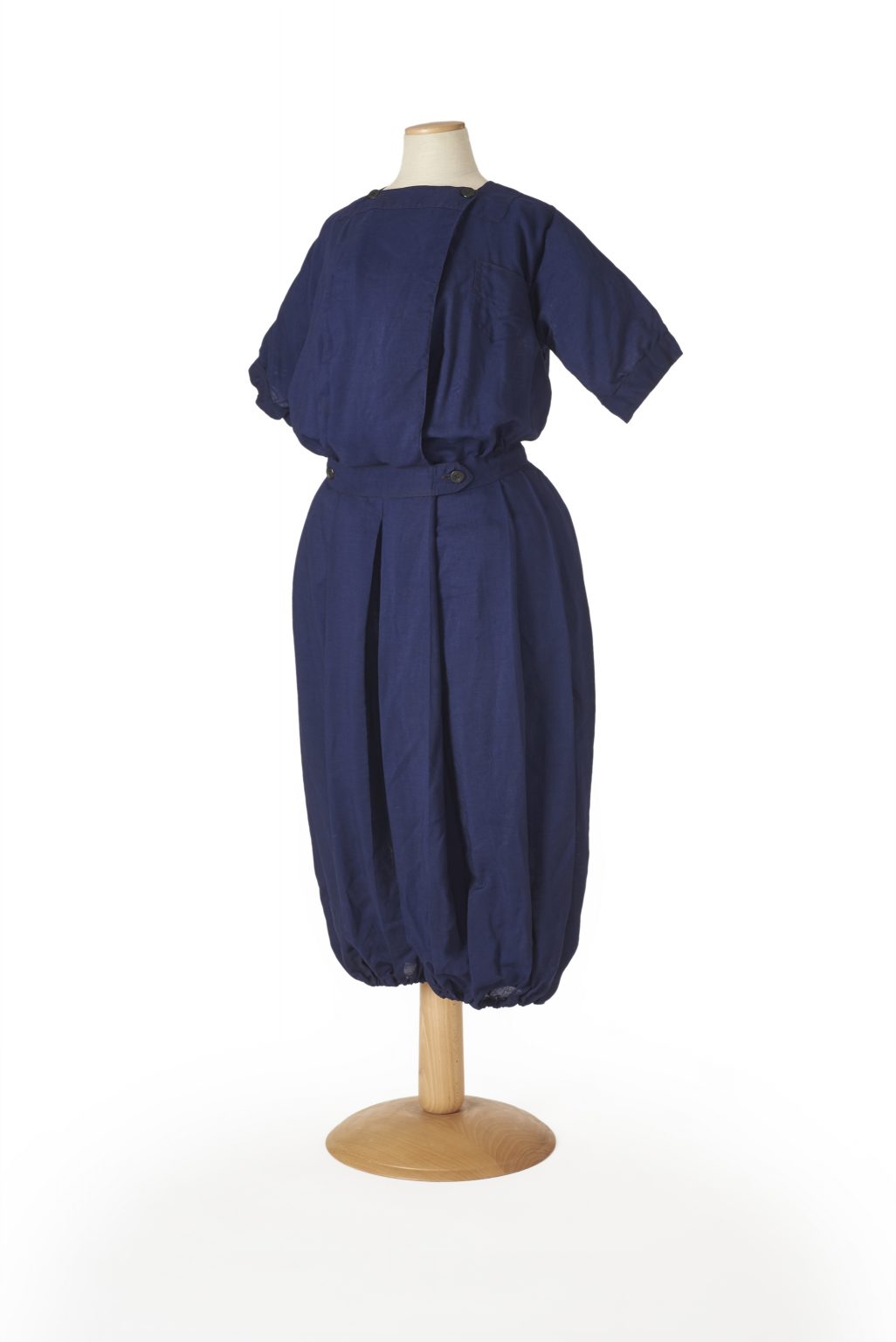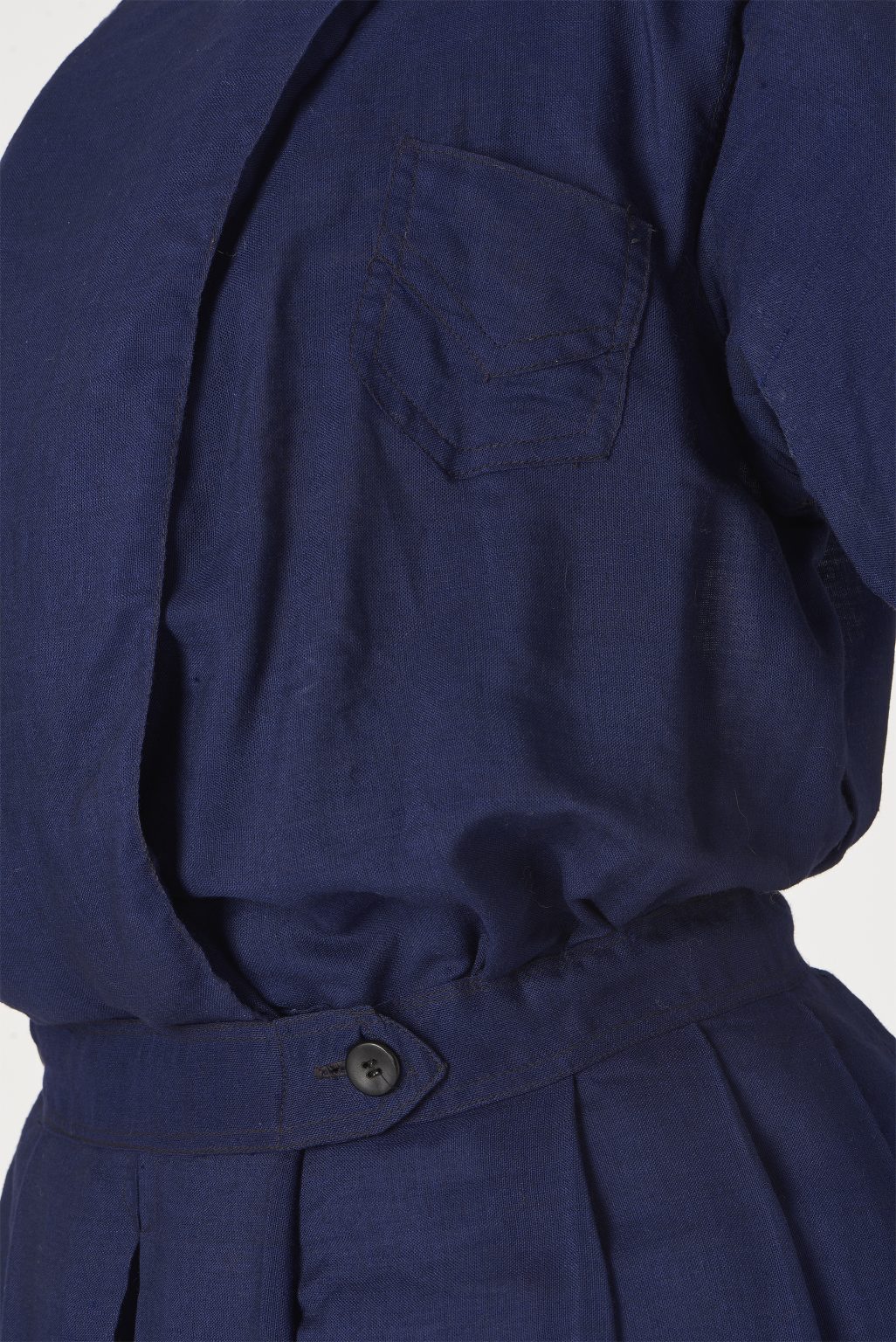
Sports dress
Blue wool sports dress, label WINNER, Los Angeles, circa 1911-15, Camilla Colombo Collection.
Details

Historical context
Women and gymnastics
Since the 19th century, gymnastics has been practised by bourgeois women in their free time and taught to girls at school as a healthy activity. The first women’s gymnastics club was founded in Switzerland in 1860, while the first women’s competition was held in Germany in 1894. The clothing used for this sport, however, was still far from being comfortable and practical. Women did their exercises wearing voluminous canvas suits with wide blouson trousers that hid the form of their bodies and with corsets still often worn underneath.
These outfits are a far cry from the practical male outfits, but despite this, the female gymnasts’ knee-length trousers caused a great scandal at the Stockholm Olympics in 1912.
It was not until the 1920s that women found the courage to break the rules and reveal their bodies. Sportswear became fashionable, while gymnasts’ skirts and sleeves became shorter. At the Paris Olympics in 1924, thinner, cooler fabrics such as satin and cotton jersey took over from the heavy canvas of previous years.
In Italy women began to be taken seriously in sport with the rise of Fascism: physical education was taught by the Opera Nazionale Balilla from primary school and sports uniforms inspired by military uniforms became compulsory.
1928 marked a historic date: for the first time, women were admitted to the Olympic Games in Amsterdam, provided their shorts were no more than four inches shorter than their knees. Italy took part with the Piccole Italiane della Ginnastica Pavese, who won the silver medal. However, it was not until the 1936 Berlin Olympics that women's gymnastics were officially integrated into the Olympic programme.